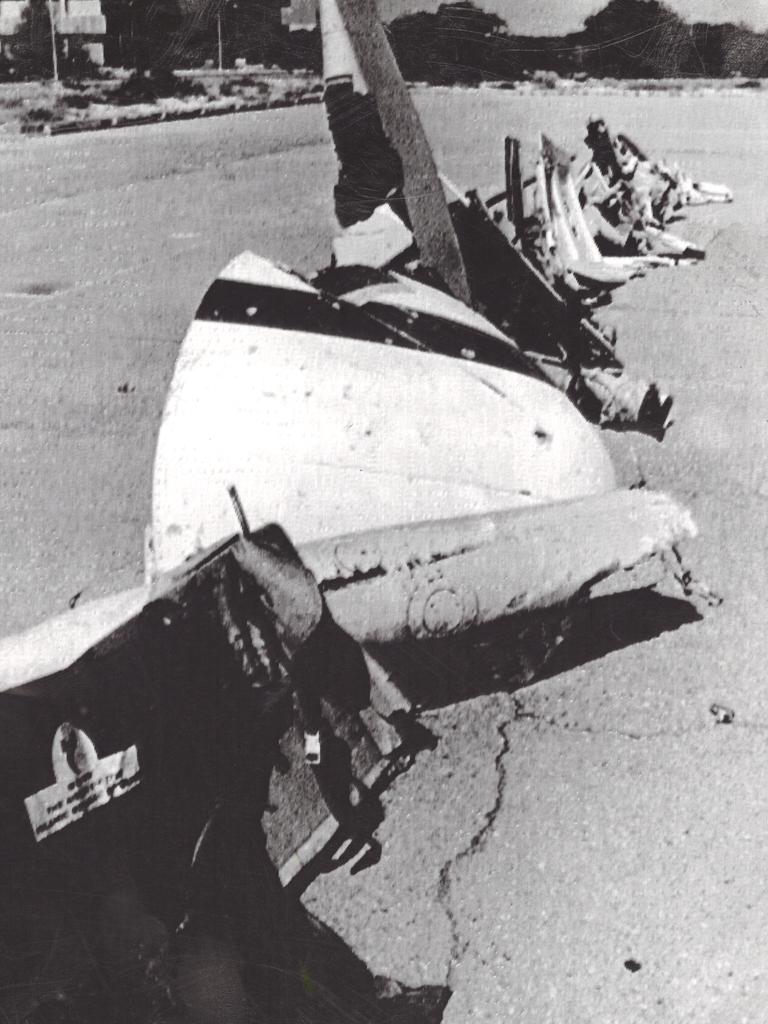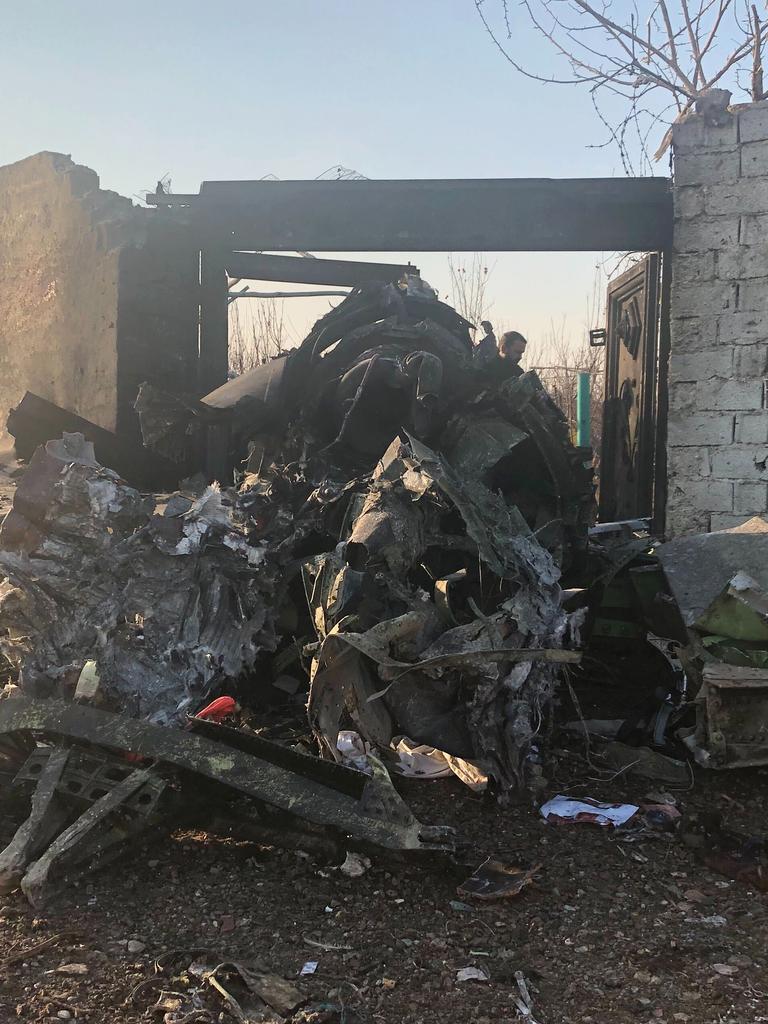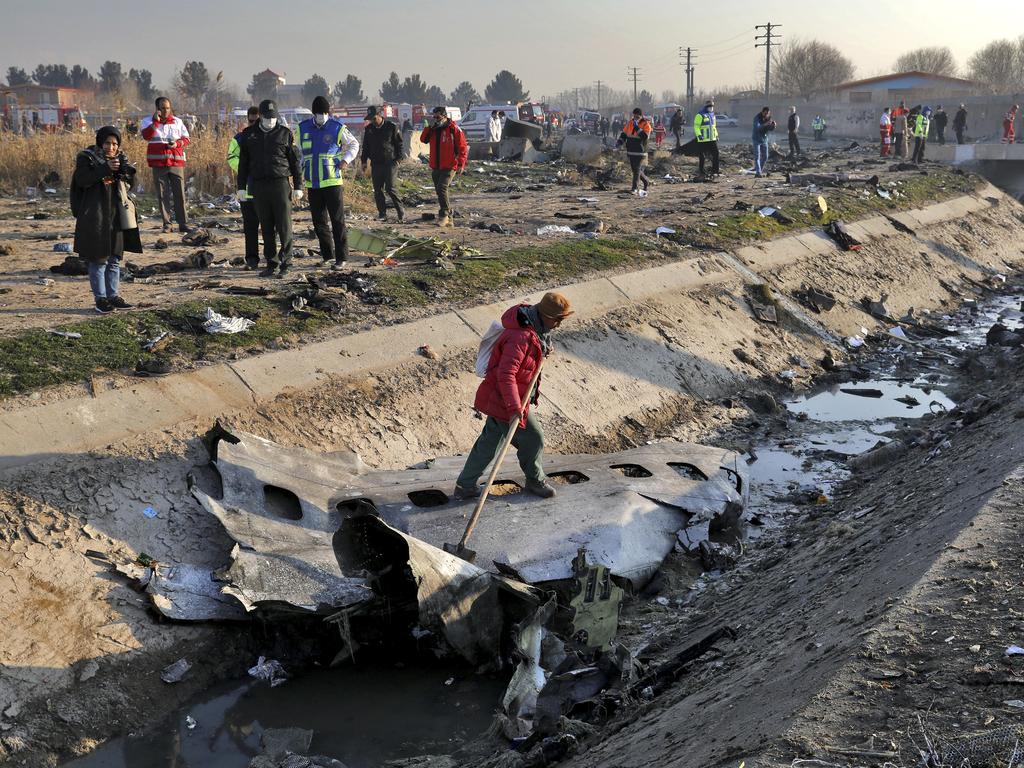The ‘barbaric massacre’ behind US-Iran hostilities
Among the most incendiary of the fuels that fire the hatred of Iran’s Mullahs for America is an act of “aggression” that is largely forgotten by the West – the accidental destruction of an Iranian commercial flight. Now, in a cruel and tragic irony, history has twisted and repeated itself.

- Shock video shows moment Ukrainian jet shot down
- ‘Committed to the mission’: Troops to stay in Iraq
- Why Iran’s missile base attack had zero casualties
- Iran denies shooting down passenger plane
Among the most incendiary of the fuels that fire the hatred of Iran’s Mullahs for America – the “great Satan” – is an act of “aggression” that is largely forgotten by the West.
It was almost a decade after the Islamic republic was established in Iran when hardliners toppled the US-backed Shah in the 1979 revolution.
In July 1988, towards the end of the Iran-Iraq war, in which America then supported Iraq, US Navy cruiser Vincennes shot down what it thought was an Iranian F-14 fighter jet during a firefight in the Persian Gulf.
But instead of a nimble fighter jet, the plane was in fact Iran Air Flight 655 and all 290 passengers and crew aboard the A300 Airbus, including 66 children, perished.


The US apologised for the tragedy, but Iran has never accepted that was an accident and it is still described in school lessons there as a “barbaric massacre” by the US.
Now, in a cruel and tragic irony, history has twisted and repeated itself.
US officials confirmed yesterday they believe Iran mistakenly shot down a Ukraine passenger jet, killing all 176 aboard, at the height of this week’s spiralling tensions between America and Tehran.
“Somebody could have made a mistake on the other side,” Mr Trump said.
“Some people say it was mechanical. I personally don’t think that’s even a question.”
Prime Minister Scott Morrison, Canadian Prime Minister Justin Trudeau – who lost 63 citizens in the crash – and British Prime Boris Johnson, said they believed Iran was responsible for downing the airliner.
“There is now a body of information that the flight was shot down by an Iranian surface to air missile. This may well have been unintentional,” Mr Johnson said.
“We are working closely with Canada and our international partners and there now needs to be a full, transparent investigation.”

This dark ending came after a week of spiralling tensions that many feared would lead to a new Middle East war.
Iran and Washington have been close to war many times in the past four decades, but few skirmishes were as dramatic as the knuckle-ride of the past week, following the US killing last Friday of Iran’s top general, Qassem Soleimani, and a senior Iraq militia leader, Abu Mahdi al-Muhandis.

The Soleimani strike capped off months of building tension as Iranians, suffering under harsh economic sanctions laid by the Trump administration, mobilised for mass anti-government protests in November and December. The open rebellion inflamed the Islamic regime, which struck back at America through its proxy militias, increasingly targeting US interests in Iraq.
On December 29, an attack on an Iraq military base by the Iran-funded Kataib Hezbollah militia killed a US contractor and wounded several American soldiers. Mr Trump has said several times this killing was directed by Soleimani, and the US initially responded by targeting the militia with strikes that killed 25.

Thousands of protesters aligned with Kataib Hezbollah then led an attack on the US embassy in Baghdad, storming its perimeter and besieging it for several hours on New Year’s Eve.
This breach and its parallels with the 1979 hostage crisis, where 52 Americans were held for 444 days after an attack on the US Embassy in Tehran, infuriated Mr Trump and he issued several warnings in the days before his Soleimani strike on January 3.
Soleimani’s death caused shockwaves around the world and put the region onto a war footing. Iran announced it would walk away from the 2015 nuclear deal that limited its ability to develop atomic weapons and the US deployed an additional 3500 troops to the region. Iraq’s parliament, caught between two allies, voted to boot out US troops after their 17 years on the ground there.
It was also widely anticipated that Iran would take some kind of military action, and the regime’s revenge came on Wednesday in the form of missile attacks on two Iraq military bases which also house allied forces, including Australians. There were no casualties and “minimal damage” to the bases.
Iran’s Foreign Minister Javad Zarif indicated the Iraq attacks, which were significant because they were fired from Iranian territory rather than through the proxy militias with which Tehran usually targets the US, were “proportionate measures” that would stand as the regime’s retaliation.

“We do not seek escalation or war, but will defend ourselves against any aggression,” Mr Zarif said at the time.
There is some conjecture that Iran’s strike was symbolic and that, looking for an off-ramp from imminent war, they had calibrated the attack as a warning shot rather than to kill Americans.
“It would have been impossible for them to sit quiet in the corner and be all right with the assassination of one of their most senior and popular officials. So they had to do something,” said Dina Esfandiary from the London think-tank the Century Foundation. And Senior Islamic Revolution Guards Corps commander Amir Ali Hajizadeh said yesterday the mission was carried out as intended.

In the first step of our operation, we did not intend to kill American troops. If the operation had continued, all these areas would have certainly been targeted. I emphasise that our operation was aimed at damaging their war machine,” he said.
The Pentagon and the White House disagreed with this assessment.
“I believe based on what I saw and what I know that they were intended to cause structural damage destroy vehicles and equipment and aircraft and to kill personnel,” said Joint Chiefs of Staff General Mark Milley.
Either way, the fact that no allied soldiers were killed appears to have settled the situation for now, with Mr Trump saying “Iran appears to be standing down” and signalling the US won’t retaliate further.
Mr Trump’s backers are seeing the outcome as a victory for the president.
“Once again, the Chicken Little chorus got everything all wrong. The sky isn’t falling and Donald Trump pulled off a huge victory. Oh, and he’s still president,” wrote the New York Post’s Michael Goodwin.

“Iran’s decision to pretend it was retaliating for the death of Qassem Soleimani by lobbing ineffective missiles is terrific news for America and freedom-loving people everywhere. So was Trump’s Wednesday offer of negotiations, which he wrapped in even tougher economic sanctions and warnings against any new attacks on Americans.
“Over the last week, the president has put on a clinic in seeking peace while projecting strength.
“Strategically and morally, it was a no-brainer that the terror mastermind deserved to die, and the notion that Trump’s presidency would be ended because he approved the mission was wishful thinking at its most diabolical.”
But his critics say that while there may be an uneasy peace for now, the real danger lies ahead.
“There’s definitely a possibility that Iran bides its time and that we’re looking at months or years of reprisal,” former Obama administration foreign policy adviser, Brett Bruen, told News Corp Australia.
“This was a demonstration of strategic restraint on the part of Iran, not that they’re standing down.
“Also let’s also remember, Iran has very rarely ever acted with a full frontal assault. That is not their comparative advantage, they understand that the capabilities of the United States are far greater on an open battlefield.
“But when it comes to asymmetric attacks, Iran has always specialised in the black arts. And I think we can expect to see both from Iran as well as from their proxies, retaliatory strikes, that they are, in all likelihood preparing now.
“I think there’s a false sense of security that was given by the president and his national security team, which I fear will allow us to take your eye off the ball.”
Originally published as The ‘barbaric massacre’ behind US-Iran hostilities


